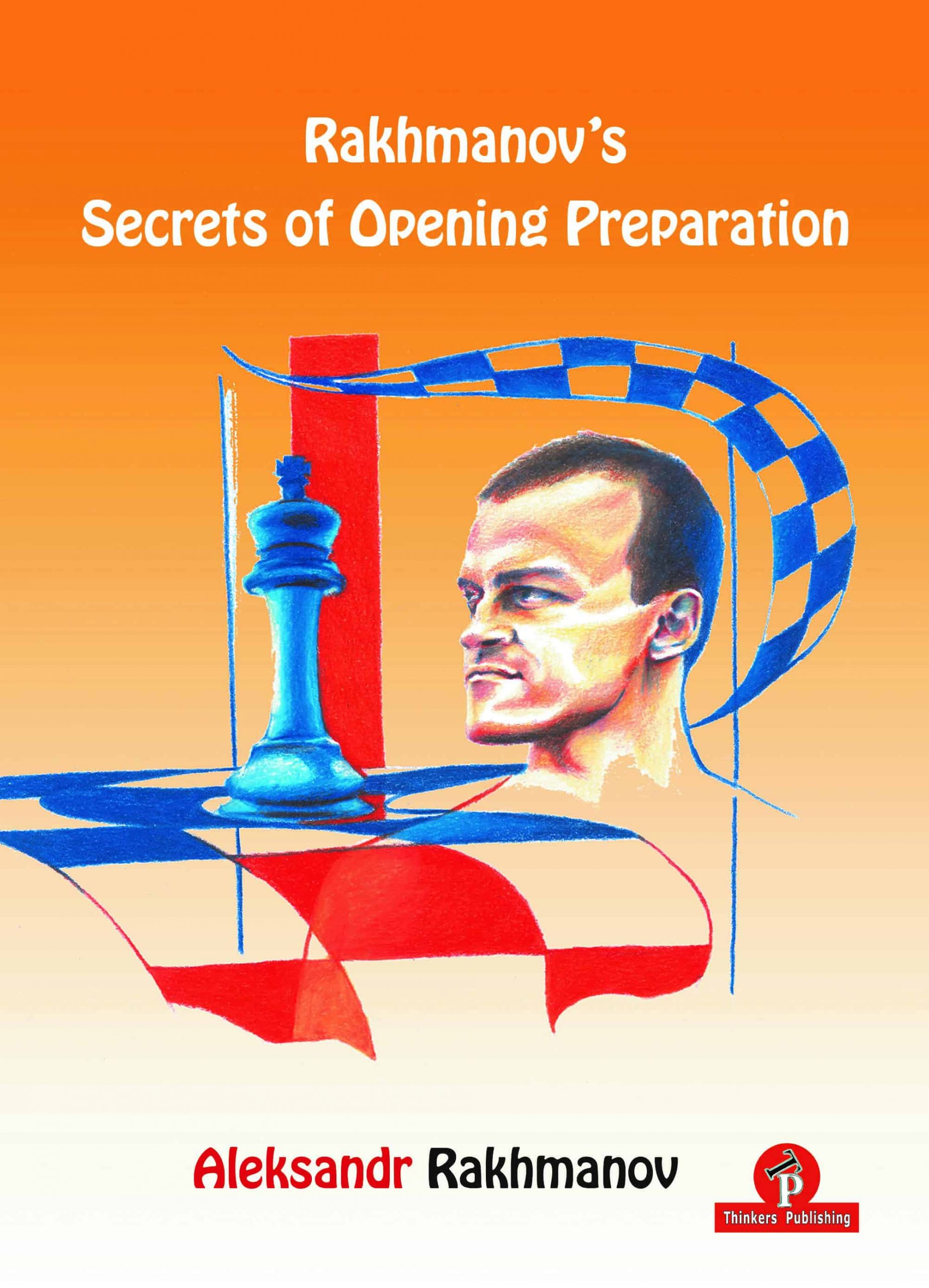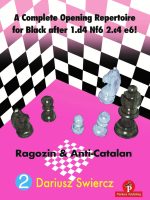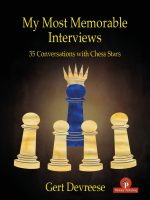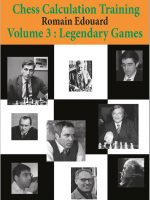Description
Aleksander Rakhmanov – Rakhmanov’s Secrets of Opening Preparation – ISBN 9789464201277 – 360 pages.
TEASER [PDF] – Rakhmanov’s Secrets of Opening Preparation
My Style
The character of any player is reflected in their game. It also applies to choosing their openings. Therefore, for you to better understand what I’m going to explain in this book, I should describe my style. I play simple positional chess and like to play the endgame. I don’t look for complications for the sake of complications, but if the position requires sacrifices based on the situation on the board, then I will do so without hesitation. I like to control the course of actions; therefore, I would prefer to play with the initiative without a pawn than vice-versa. In general, giving the opponent dynamics is a bad idea.
In most cases, my game is built on pawn structures. I adore positions with weaknesses, doubled pawns, and a better arrangement of pieces. I prefer to play short opening variations with a fixed pawn structure and positions with an open center. In preparing the lines, I use the engine. But I consider it very important to study the games of strong chess players. Of these, typical ideas and maneuvers can be memorized; this is easier for a human than memorizing lines.
Preparation for the Game
I start preparation by viewing my opponent’s games over the last 2-3 years. Sometimes the last year is enough – if the opponent plays actively. Sometimes, if they are young and only have 30-40 games in the database, you can look at all the games (by the way, if you have only a few games in the database, this is not very pleasant for the opponent). I do it quickly, looking at about 20 moves, mainly focusing on the opening stage.
It is also worth looking at their games for the opposite color in order to understand whether they play the same thing that you want to play. This is especially important if you use several opening options; there is the opportunity to lead the opponent into a position less familiar to him.
An important point if you use the “Chessbase” program. You can use the “select to book” function, but I think it’s better to go through each game to understand which of the openings have been played recently.
Then I try to understand if there is a weak point. As the saying goes:
Once is an accident,
Two times is a coincidence,
Three times is a pattern,
Four times is a tradition.
Recently, I have noticed that if the opponent has played some line 2-3 times, even if the line is dubious, then there is a high chance that they will play it again. This line of play could be dubious from my point of view, but the opponent may think that everything is great. This may be a position without an advantage, but I would be pleased to play it against this opponent. Whenever possible, I always try to take my opponent away from the lines they know well as early as possible.
In general, my recommendation is simple if you play against a stronger opponent: play according to theory for as long as possible. It could be the theory in your own variation, and not the main lines. On the contrary, if the opponent is weaker, it is better that his theoretical knowledge is ended as soon as possible.
My Openings with White
I use three starting moves: 1.d4, 1.c4 and 1.Nf3. It is a good thing that they have a similar character and can transpose to each other. It’s not like playing both 1.e4 and 1.d4 – different things.
Generally, Black has two options of play in closed openings:
1. Solid openings, based on the …d5-move.
a. The Slav Defense: 1.d4 d5 2.c4 c6
b. The Queen’s Gambit: 1.d4 d5 2.c4 e6
c. The Nimzo-Indian: 1.d4 Nf6 2.c4 e6
I like to play against those openings. So, I usually use 1.d4. But depending on the situation, I can also play 1.с4/1.Nf3.
2. Dynamic openings, based on the …g6-move:
a. The Grünfeld Defense: 1.d4 Nf6 2.c4 g6 3.Nc3 d5
b. The King’s Indian Defense: 1.d4 Nf6 2.c4 g6 3.Nc3 Bg7
c. The Volga Gambit: 1.d4 Nf6 2.c4 c5 3.d5 b5
d. The Benoni: 1.d4 Nf6 2.c4 c5 3.d5 e6
I don’t like to give the initiative to the opponent even if the engine shows a good evaluation. So, in most cases I use 1.с4 or 1.Nf3. I play 1.d4 followed by 2.с4 when I know for sure what to expect from my opponent. I don’t want to get an opening surprise and lose as White for nothing.
A surprising note: I don’t have any special preparation against sidelines such as the Albin Counter-Gambit or the Chigorin Defense. Just because nobody plays it.
My Openings with Black
Against 1.e4
1. 1.e4 e5 2.Nf3 Nf6
I have a solid option – The Petroff Defense, I use this against 2500+ players. Interestingly, it’s not necessarily a play for a draw. Yes, there are many ways for White to make a draw. But if he wants to play for a win, I’m ready to welcome him with his wish.
Another surprising note: I don’t know anything on the King’s Gambit. Of course, I have checked some lines, but I remember nothing. Why learn a line which nobody plays? Probably, I will have to learn it after publishing this book.
2. 1.e4 c5 2.Nf3 Nf6 & 1.e4 d5
There are two options to play for a win against players below 2500: an immediate challenge, attacking the central pawn and taking our rival to unfamiliar territories.
Against 1.d4
1. 1.d4 d5 2.c4 e6 3.Nc3/Nf3 a6
The same story as against 1.e4: one solid opening. Well, it is not strong like the Petroff, but solid.
2. 1.d4 Nf6 2.c4 d6
And a sideline to beat lower-rated opponents.
Against 1.Nf3/1.c4 and others
Being a player who loves to play on his own, I’m happy to see these “slow” moves. I don’t bother much with learning something against these.
In this book, I will mainly consider the games played with White, since I can safely recommend the lines played. The games played with Black are somewhat reminiscent of a note from an advertisement: “Caution, do not repeat at home. Performed by professional stuntmen”. Of course, you can try it if you wish. What is more important for the games by Black is for me to explain my point of view and how I outplay my opponents.
There is not much time for preparation in open tournaments. I play 2-3 openings with White and Black. My openings are not that common. Even in the Petroff, I choose my own options most of the time. Accordingly, it is unlikely that my opponent will succeed in preparing well against me.









Gerard W. (verified owner) –
An original approach to the problem of opening preparation
WALLART ADRIEN (verified owner) –
Edwin Lam Choong Wai (My SKOLA+) –
Very transparent and high-quality analysis coupled with supporting explanations besides sharing the process of opening prep that leads to the corresponding middle game and endgame play. This is not just an opening book, but one that shows how opening play is intricately linked to middle and endgames. Highly recommended.
James R Ellis (verified owner) –
Filip (verified owner) –
Karri Laine (verified owner) –
john jacobs (verified owner) –